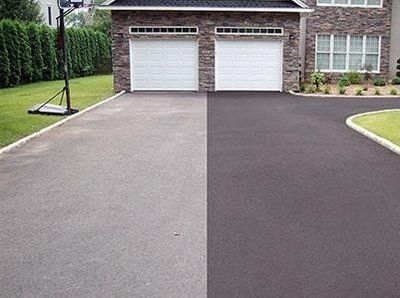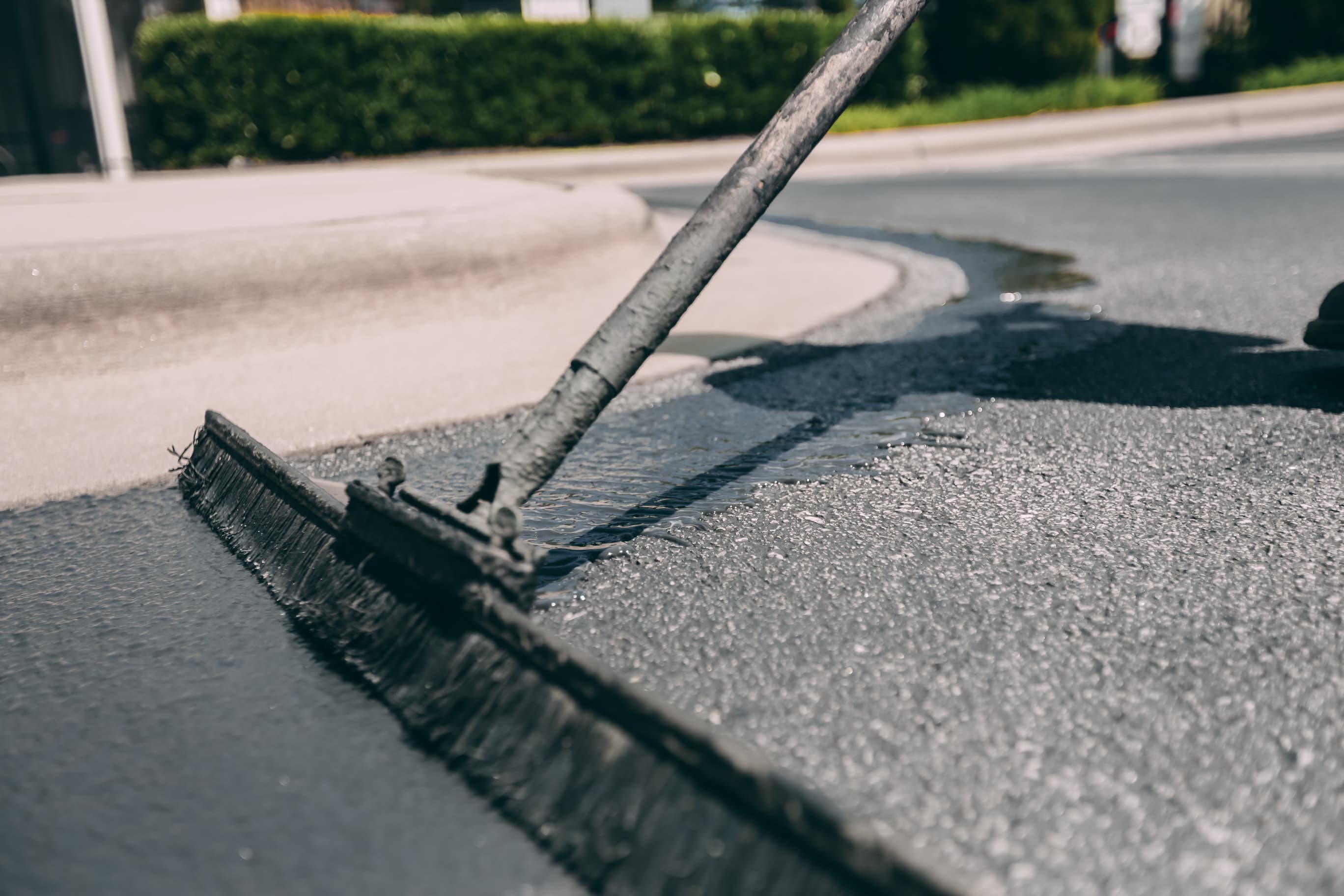Mastering Angled Parking: How Asphalt Sealing Improves Industrial Whole Lots
Mastering Angled Parking: How Asphalt Sealing Improves Industrial Whole Lots
Blog Article
Warm Mix Asphalt: A Lasting Service for Pavement
Hot Mix Asphalt (HMA) has actually become a leading sustainable choice for sidewalk options, using a myriad of environmental advantages and ingenious innovations. Its capacity to minimize and recycle materials energy consumption presents a compelling case for its adoption in road building projects. The long-lasting efficiency and toughness of HMA make it a recommended option for facilities development. As the need for environmentally friendly construction methods expands, checking out the nuances of HMA's sustainability can offer beneficial understandings into the future of pavement services.
Ecological Benefits of Hot Mix Asphalt

Moreover, Warm Mix Asphalt assists to alleviate city warmth island results. Its dark color soaks up sunlight, minimizing the amount of warmth mirrored back into the ambience compared to lighter-colored pavements. This can reduce ambient temperature levels in metropolitan areas, decreasing the demand for cooling and ultimately minimizing energy consumption.
Additionally, Hot Mix Asphalt adds to enhanced stormwater administration. Its permeable nature enables water to charge and infiltrate the pavement groundwater products, decreasing runoff and the threat of flooding. These ecological benefits make Hot Mix Asphalt a sustainable selection for paving highways and roadways.
Power Performance in HMA Manufacturing
Is energy efficiency a crucial factor in the production of Hot Mix Asphalt (HMA)? Energy plays a significant duty in the production of HMA, influencing both expense and environmental sustainability. One key facet of energy effectiveness in HMA production is the use of warm mix asphalt (WMA) innovations.
Additionally, advancements in plant innovations have actually led to more energy-efficient HMA production processes. By enhancing power usage in HMA production, the market can reduce its carbon impact while maintaining top notch sidewalk materials.
Recyclability of Hot Mix Asphalt
The recyclability of Warm Mix Asphalt (HMA) is a pivotal element of its sustainability and lasting ecological impact. HMA is one of the most recycled materials in the United States, with over 100 million lots of reclaimed asphalt pavement (RAP) being recycled every year in new pavement building. Reusing HMA uses a number of environmental benefits, such as minimizing the demand for virgin products, reducing power intake throughout manufacturing, and decreasing the quantity of waste sent out to land fills.
The procedure of recycling HMA involves milling the existing sidewalk, crushing it into smaller pieces, and mixing it with new accumulation and asphalt binder to create a recycled mix. This recycled mix can commonly execute along with and even far better than conventional HMA, while calling for less resources and creating lower greenhouse gas emissions. By incorporating RAP into brand-new sidewalk tasks, road companies can preserve natural deposits, reduce prices, and decrease the ecological impact of roadway building and construction and upkeep activities. In general, the recyclability of HMA plays a considerable function in promoting lasting practices within the pavement industry.

Long-Term Efficiency of HMA
Asphalt sidewalks from this source show resilience and durability over a prolonged duration, reflecting the long-term performance of Hot Mix Asphalt (HMA) site here The longevity of HMA can be credited to its capability to hold up against rush hour lots, rough weather, and the impacts of aging. Researches have actually shown that well-designed and correctly constructed HMA sidewalks can last for 20 years or even more with normal upkeep. The secret to maximizing the long-term performance of HMA depends on making use of high-grade products, complying with ideal techniques in building and construction, and carrying out efficient maintenance strategies. Proper drainage, regular examinations, and timely repair work are important for preserving the architectural stability of HMA pavements with time. Furthermore, advancements in HMA technology, such as the use of polymer-modified binders and cozy mix asphalt, have actually even more boosted the toughness and durability of HMA pavements. By focusing on quality building and construction and upkeep practices, HMA proceeds to prove itself as a cost-efficient and sustainable remedy for resilient pavement framework.

HMA: Longevity and Sustainability
Showing both resilience and sustainability, Warm Mix Asphalt (HMA) has actually come to be a foundation in the construction of resilient sidewalk infrastructures - commercial parking lot paving. HMA's toughness comes from its capacity to stand up to hefty loads, extreme weather, and high web traffic quantities, making it a reputable option for roadways, highways, and flight terminal runways. The structure of HMA, which generally includes aggregates, binder, and filler, plays a crucial duty in enhancing its long life and resistance to tear and use
In addition, HMA's sustainability hinges on its recyclability and energy-efficient manufacturing process. The capacity to recycle recovered asphalt sidewalk (RAP) in brand-new HMA mixtures minimizes the need for virgin materials and lessens the ecological effect of pavement building and maintenance. Furthermore, the power performance of producing HMA depends on its lower mixing temperature levels compared to other pavement products, bring about reduced energy usage and greenhouse gas exhausts.
Verdict
Finally, hot mix asphalt (HMA) uses a sustainable option for sidewalk with its eco-friendly features. HMA's recyclability, power performance in production, and long-lasting resilience make read what he said it an eco-friendly choice for road building and construction. By preserving natural deposits, reducing waste, and decreasing greenhouse gas exhausts, HMA plays a critical role in promoting sustainability in facilities advancement. Its capability to reduce urban heat island results better underscores its importance in creating resilient and environmentally aware pavement systems.
HMA is one of the most recycled materials in the United States, with over 100 million tons of reclaimed asphalt pavement (RAP) being recycled each year in new sidewalk construction.The process of recycling HMA involves milling the existing sidewalk, crushing it right into smaller items, and mixing it with brand-new aggregate and asphalt binder to develop a recycled mix.Asphalt pavements show longevity and durability over a prolonged period, mirroring the long-term efficiency of Hot Mix Asphalt (HMA) Furthermore, developments in HMA technology, such as the usage of polymer-modified binders and cozy mix asphalt, have better improved the longevity and durability of HMA sidewalks. The capability to recycle reclaimed asphalt sidewalk (RAP) in brand-new HMA mixes lowers the demand for virgin products and reduces the ecological impact of sidewalk building and construction and maintenance.
Report this page